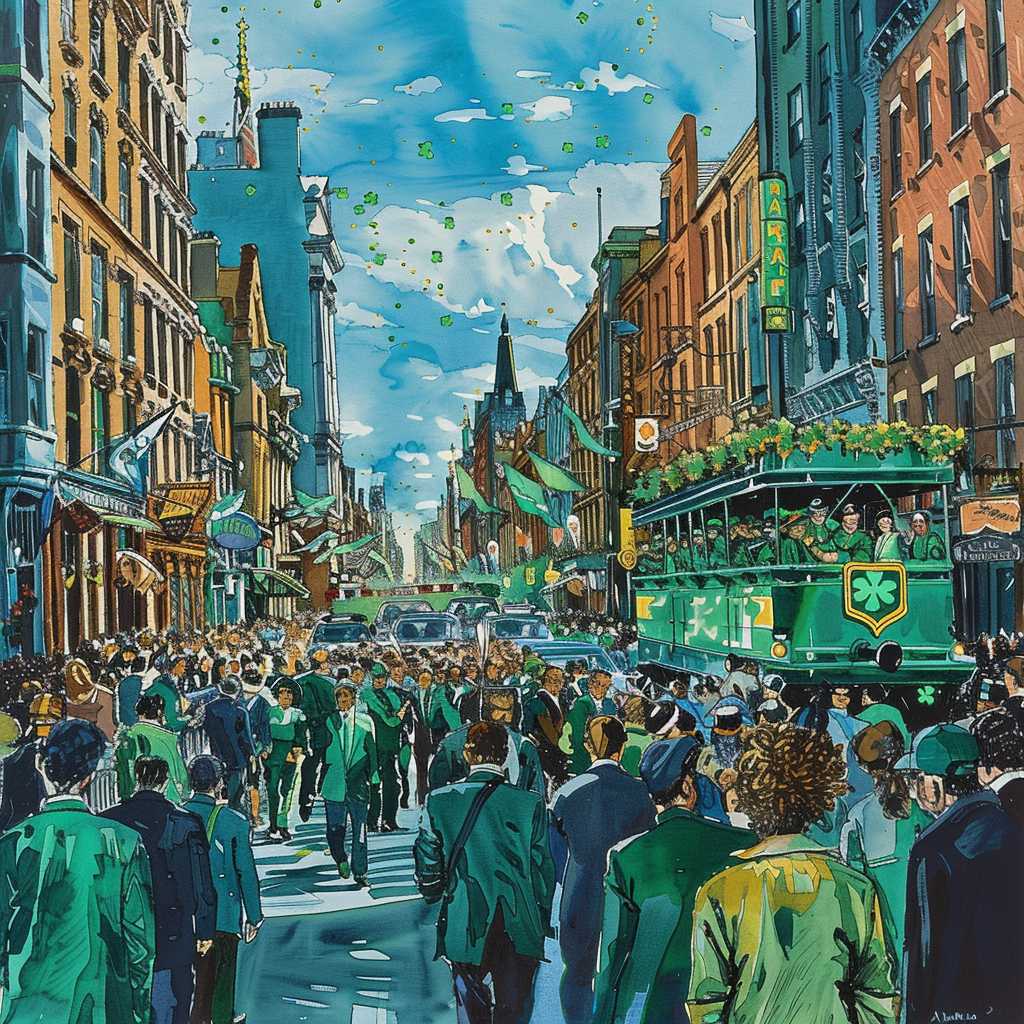St Patrick’s Day 2024: A Global Celebration of Irish Heritage and Culture
St. Patrick’s Day, held on March 17 annually, is a cultural and religious holiday that commemorates St. Patrick, the patron saint of Ireland. In 2024, this beloved occasion will continue to be celebrated around the world, with millions of people taking part in festivities that pay homage to Irish culture and heritage. The events on this day range from parades and wearing green attire, to dancing, eating traditional Irish food, and, for many, indulging in a pint of beer.
History and Significance of St Patrick’s Day
The Life of St. Patrick
St. Patrick’s Day has its origins in the early 17th century when it was made an official feast day by the Catholic Church in memory of St. Patrick, who is said to have died on March 17 in the year 461 AD. Although born in Britain, St Patrick is famous for his work in Ireland, particularly for spreading Christianity throughout the land and allegedly driving snakes from its shores.
From Religious Observation to Global Festivity
Initially a religious day set aside for feasting in Ireland, over time St. Patrick’s Day transitioned into a more secular celebration of Irish culture after it became popular among Irish emigrants, particularly in the United States. They used this day as a way to connect with their roots and celebrate their identity, thus transforming St. Patrick’s Day into a joyous occasion that extends far beyond Ireland.
St Patrick’s Day Traditions and Activities
Parades and Public Celebrations
The centerpiece of St. Patrick’s Day festivities is often the parade. The New York City St. Patrick’s Day Parade remains one of the oldest and largest parades worldwide but many other cities across the globe such as Boston, Chicago—where they dye the river green—Dublin, Sydney, and Tokyo also boast large-scale public celebrations highlighting Irish music, dance, and distinctive shamrock-emblazoned floats.
Wearing of Green *
One cannot imagine St Patrick’s Day without a splash of green everywhere — from people dressing up in various shades of emerald to landmarks around the world lighting up in green. The color green is associated with Ireland due to its lush landscapes earning it the name ‘Emerald Isle’, as well as its historical significance related to Irish nationalism. Irish Music and Dance
One cannot imagine St Patrick’s Day without a splash of green everywhere — from people dressing up in various shades of emerald to landmarks around the world lighting up in green. The color green is associated with Ireland due to its lush landscapes earning it the name ‘Emerald Isle’, as well as its historical significance related to Irish nationalism.
Irish Music and Dance
Traditional Irish music sessions and performances of dances such as jigs, reels, and hornpipes are an essential element that brings communities together on this day. Famous for its infectious energy, Irish music performed by groups using instruments like the fiddle, tin whistle, and bodhrán gives these celebrations a harmonious and exhilarating mood.
Food and Drink
Irish gastronomy also takes center stage with dishes such as corned beef and cabbage, Irish soda bread, and shepherd’s pie being particularly popular. The consumption of drinks like Irish stout (e.g., Guinness), whiskey, and Bailey’s Irish Cream indulges patrons in a taste of Ireland’s rich beverage culture.
Civic Engagement and Charity Work
Many organizations also take St. Patrick’s Day as an opportunity to engage in philanthropic activities aimed at supporting communities both within and outside Ireland. Fundraisers and drives for causes ranging from social welfare to promoting Irish arts and literature are customary on this day.
Significance Beyond Ireland
Cultural Exchange and Tourism
The global influence of St. Patrick’s Day supports cultural exchange and tourism, linking people around the world through shared celebration. Cities hosting large parades often experience a marked increase in visitors wanting to participate in these public festivities, generating tourism revenue while sharing Ireland’s vibrant culture.
Business and Economic Impact Besides being a cultural event, St. Patrick’s Day has substantial economic implications. From themed merchandise sales to increased traffic at bars and restaurants, this day carries significant commercial weight, offering businesses an annual opportunity to capitalize on festivity-driven sales boost. Community Spirit and Global Unity
Community Spirit and Global Unity
At its heart, St Patrick’s Day serves as a connector—uniting people regardless of ethnic background around themes of joyfulness and community spirit. For many immigrated Irish descendants especially, it symbolizes a sense of belonging and a chance to showcase pride in their ancestral heritage on a global stage.
